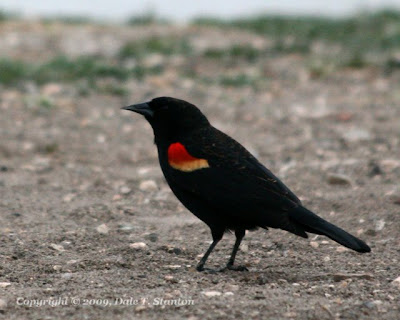One of my favorite birds is the Mississippi Kite. They are in the same family as hawks, eagles, harriers, ospreys, etc. Mississippi Kites are raptors - predators - and feed mainly on larger insects like grasshoppers and dragonflies. They can also occasionally take larger prey such as bats, swifts, and swallows. The Mississippi Kite is likely the one raptor that will casually eat in flight. The first thing you may notice is their black "mask" against a light gray head and body.

The panhandle is part of the Mississippi Kite's breeding grounds. Many people have complained about them "attacking" them while walking down a sidewalk. They are not aggressive towards humans. When nesting, the Mississippi Kite can be very defensive and territorial, and will attempt to urge people, dogs, etc., to move away from their nest or the tree it's in. I have personally been "buzzed" repeatedly by them while working on rooftops. Should you ever encounter them in this way, don't be afraid. Simply move along if you get concerned. They have no malice towards you. They don't want to harm or eat you. They just want you to go away. If they had a problem with human activity, they wouldn't nest amongst us. When I have been buzzed by them, I have never had them close enough to even reach out and touch them - or them, me. Rooftops are much closer to their nests than you would be by walking down the sidewalk.

Kites generally winter over in South America and return to Texas in May. While thought of as a southern raptor, they have been seen as far north as New England.

 The panhandle is part of the Mississippi Kite's breeding grounds. Many people have complained about them "attacking" them while walking down a sidewalk. They are not aggressive towards humans. When nesting, the Mississippi Kite can be very defensive and territorial, and will attempt to urge people, dogs, etc., to move away from their nest or the tree it's in. I have personally been "buzzed" repeatedly by them while working on rooftops. Should you ever encounter them in this way, don't be afraid. Simply move along if you get concerned. They have no malice towards you. They don't want to harm or eat you. They just want you to go away. If they had a problem with human activity, they wouldn't nest amongst us. When I have been buzzed by them, I have never had them close enough to even reach out and touch them - or them, me. Rooftops are much closer to their nests than you would be by walking down the sidewalk.
The panhandle is part of the Mississippi Kite's breeding grounds. Many people have complained about them "attacking" them while walking down a sidewalk. They are not aggressive towards humans. When nesting, the Mississippi Kite can be very defensive and territorial, and will attempt to urge people, dogs, etc., to move away from their nest or the tree it's in. I have personally been "buzzed" repeatedly by them while working on rooftops. Should you ever encounter them in this way, don't be afraid. Simply move along if you get concerned. They have no malice towards you. They don't want to harm or eat you. They just want you to go away. If they had a problem with human activity, they wouldn't nest amongst us. When I have been buzzed by them, I have never had them close enough to even reach out and touch them - or them, me. Rooftops are much closer to their nests than you would be by walking down the sidewalk. Kites generally winter over in South America and return to Texas in May. While thought of as a southern raptor, they have been seen as far north as New England.
Kites generally winter over in South America and return to Texas in May. While thought of as a southern raptor, they have been seen as far north as New England.
































